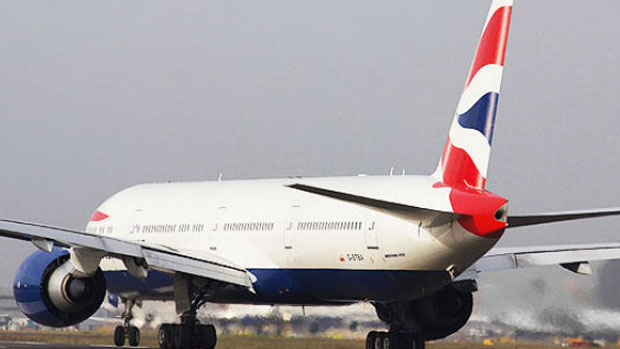BA jet nears supersonic speed on flight to London
British Airways jet hit 745mph on what may have been the quickest transatlantic crossing since Concorde

The flight time between New York and London was slashed when a British Airways plane reached almost supersonic speeds by riding a powerful jet stream.
The unusually strong winds resulted in a record flight time of five hours and 16 minutes, with the plane arriving 90 minutes ahead of schedule despite departing late from JFK airport. The journey is thought to be the quickest since supersonic jet Concorde stopped flying.
The Boeing 777-200 reportedly reached ground speeds of 745mph, almost breaking the sound barrier, 761mph, during its transatlantic journey.
The Week
Escape your echo chamber. Get the facts behind the news, plus analysis from multiple perspectives.

Sign up for The Week's Free Newsletters
From our morning news briefing to a weekly Good News Newsletter, get the best of The Week delivered directly to your inbox.
From our morning news briefing to a weekly Good News Newsletter, get the best of The Week delivered directly to your inbox.
Jet streams, extremely high winds in the upper part of the atmosphere, are regularly used by pilots to maximise speed, shorten travel times and conserve fuel and are at their strongest at this time of year.
"It's just like surfing. It's extraordinary how fast you can go," a former BA pilot told the Daily Telegraph.
However, as jets streams are usually only ten miles across, a combination of skill, planning and luck are required to take advantage of them.
"You try and sit in the core of the jet where it's not too turbulent and where you can pick up some free mileage. It's not unusual to get 100mph tailwinds but they have got more than that," he said. "This must be a record."
A free daily email with the biggest news stories of the day – and the best features from TheWeek.com
Northern hemisphere flight times in January and February, particularly between the US and Europe, are often noticeably shorter due to the increase in the prevalence of jet streams, with journeys westwards across the Atlantic taking longer and often encountering more turbulance.
The jet stream is formed by freezing air from the northern US meeting warmer air from the south. The weather system triggered gale force winds and storms in the UK last week, which left thousands of homes without power and caused severe travel disruption in Scotland.
-
 Crossword: December 30, 2025
Crossword: December 30, 2025The daily crossword from The Week
-
 What have Trump’s Mar-a-Lago summits achieved?
What have Trump’s Mar-a-Lago summits achieved?Today’s big question Zelenskyy and Netanyahu meet the president in his Palm Beach ‘Winter White House’
-
 The most anticipated movies of 2026
The most anticipated movies of 2026The Week Recommends If the trailers are anything to go by, film buffs are in for a treat
-
 How Bulgaria’s government fell amid mass protests
How Bulgaria’s government fell amid mass protestsThe Explainer The country’s prime minister resigned as part of the fallout
-
 Femicide: Italy’s newest crime
Femicide: Italy’s newest crimeThe Explainer Landmark law to criminalise murder of a woman as an ‘act of hatred’ or ‘subjugation’ but critics say Italy is still deeply patriarchal
-
 Brazil’s Bolsonaro behind bars after appeals run out
Brazil’s Bolsonaro behind bars after appeals run outSpeed Read He will serve 27 years in prison
-
 Americans traveling abroad face renewed criticism in the Trump era
Americans traveling abroad face renewed criticism in the Trump eraThe Explainer Some of Trump’s behavior has Americans being questioned
-
 Nigeria confused by Trump invasion threat
Nigeria confused by Trump invasion threatSpeed Read Trump has claimed the country is persecuting Christians
-
 Sanae Takaichi: Japan’s Iron Lady set to be the country’s first woman prime minister
Sanae Takaichi: Japan’s Iron Lady set to be the country’s first woman prime ministerIn the Spotlight Takaichi is a member of Japan’s conservative, nationalist Liberal Democratic Party
-
 Russia is ‘helping China’ prepare for an invasion of Taiwan
Russia is ‘helping China’ prepare for an invasion of TaiwanIn the Spotlight Russia is reportedly allowing China access to military training
-
 Interpol arrests hundreds in Africa-wide sextortion crackdown
Interpol arrests hundreds in Africa-wide sextortion crackdownIN THE SPOTLIGHT A series of stings disrupts major cybercrime operations as law enforcement estimates millions in losses from schemes designed to prey on lonely users